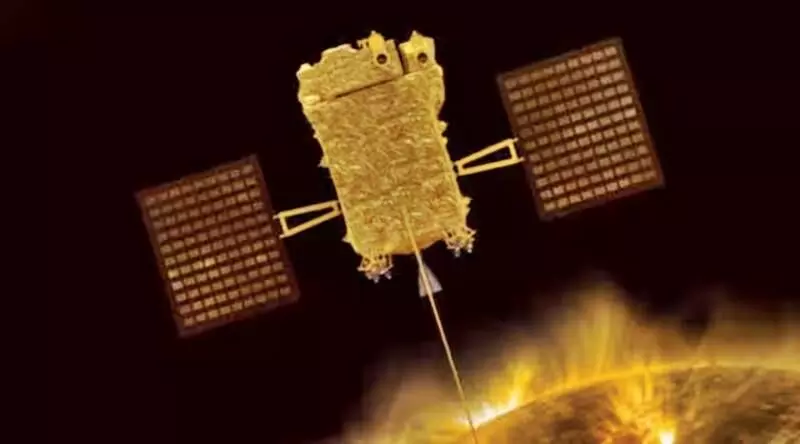Explained: After Chandrayaan 3’s success, all eyes set on Aditya L-1 — India’s first solar mission
Following Chandrayaan-3’s successful landing on the lunar surface, India’s next ambitious space mission, ‘Aditya L-1’ is set to study the sun. As part of the mission, the Aditya L-1 will study aspects of the sun such as its heating, solar flares, and dynamics of space weather. Details here.
 गाँव कनेक्शन 2 Sep 2023 6:20 AM GMT
गाँव कनेक्शन 2 Sep 2023 6:20 AM GMT

Aditya in Sanskrit is translated as the Sun.
Today, on September 2, at 11:50 am, Indian Space Research Organisation [ISRO] launched its first solar mission which is named Aditya L-1. The mission is supposed to be placed in an orbit between the Earth and the Sun — at a distance of 1.5 million kilometres from the Earth. The mission
To put things into perspective, the distance of the Sun from Earth is 150.96 million kilometres.
The spacecraft will launch the mission at a distance of 1.5 million kilometres from the Earth because at such a distance, there is no obstruction in studying the sun such as eclipses which is also known as occultation.
“A satellite placed in the halo orbit around the L1 point has the major advantage of continuously viewing the Sun without any occultation/eclipses. This will provide a greater advantage of observing the solar activities and its effect on space weather in real time,” ISRO mentions in its notes on the Aditya L-1 mission.
The spacecraft carries seven payloads to observe the photosphere [the surface of the Sun is called the photosphere], chromosphere [the second layer of the sun's atmosphere] and the outermost layers of the Sun (the corona). The mission shall use electromagnetic, particle and magnetic field detectors to study the sun.
“The suits of Aditya L1 payloads are expected to provide most crucial informations to understand the problem of coronal heating, coronal mass ejection, pre-flare and flare activities and their characteristics, dynamics of space weather, propagation of particle and fields,” ISRO mentioned.
Using the special vantage point between the Sun and the Earth, L1, four payloads directly view the Sun and the remaining three payloads carry out in-situ studies of particles and fields, thus providing important scientific studies of the propagatory effect of solar dynamics.
This location also allows the satellite to access solar radiation and magnetic storms before they are influenced by Earth's magnetic field and atmosphere. Additionally, the L1 point’s gravitational stability minimises the need for frequent orbital maintenance efforts, optimizing the satellite's operational efficiency.
Aditya in Sanskrit is translated as the Sun. L1 here refers to Lagrange Point 1 of the Sun-Earth system. ISRO mentioned that for common understanding, L1 is a location in space where the gravitational forces of two celestial bodies, such as the Sun and Earth, are in equilibrium. "This allows an object placed there to remain relatively stable with respect to both celestial bodies," it stated.
Following its scheduled launch on September 2, 2023, Aditya-L1 stays Earth-bound orbits for 16 days, during which it undergoes 5 manoeuvres to gain the necessary velocity for its journey.
"Subsequently, Aditya-L1 undergoes a Trans-Lagrangian1 insertion maneuvre, marking the beginning of its 110-day trajectory to the destination around the L1 Lagrange point. Upon arrival at the L1 point, another maneuvre binds Aditya-L1 to an orbit around L1, a balanced gravitational location between the Earth and the Sun. The satellite spends its whole mission life orbiting around L1 in an irregularly shaped orbit in a plane roughly perpendicular to the line joining the Earth and the Sun," ISRO mentioned.
#AdityaL1 #ISRO Space #Chandrayaan3
More Stories




